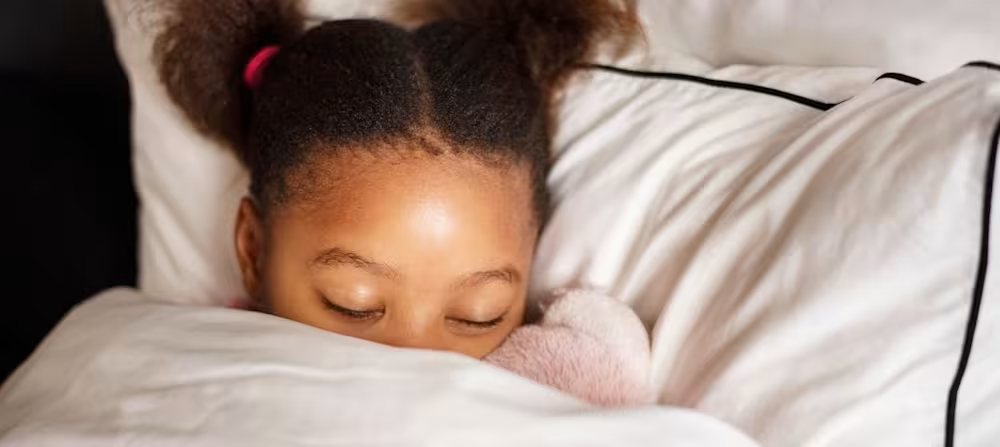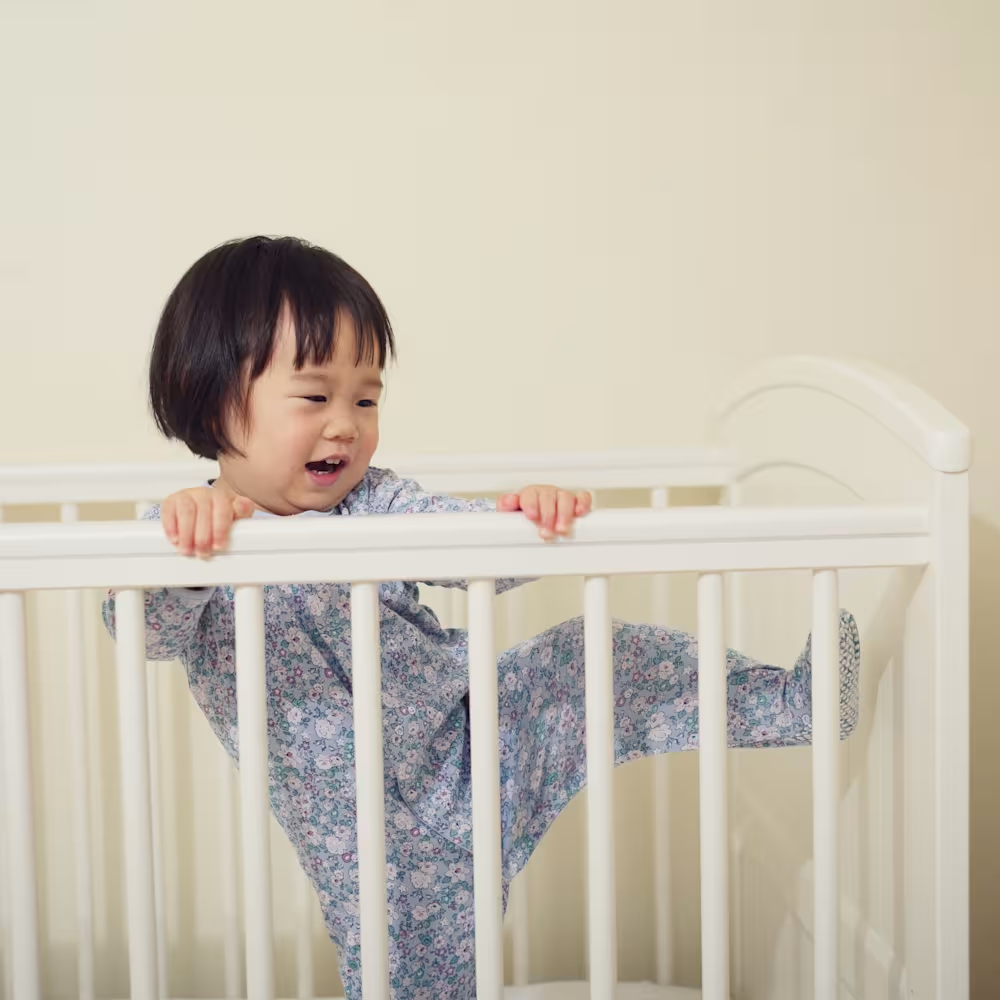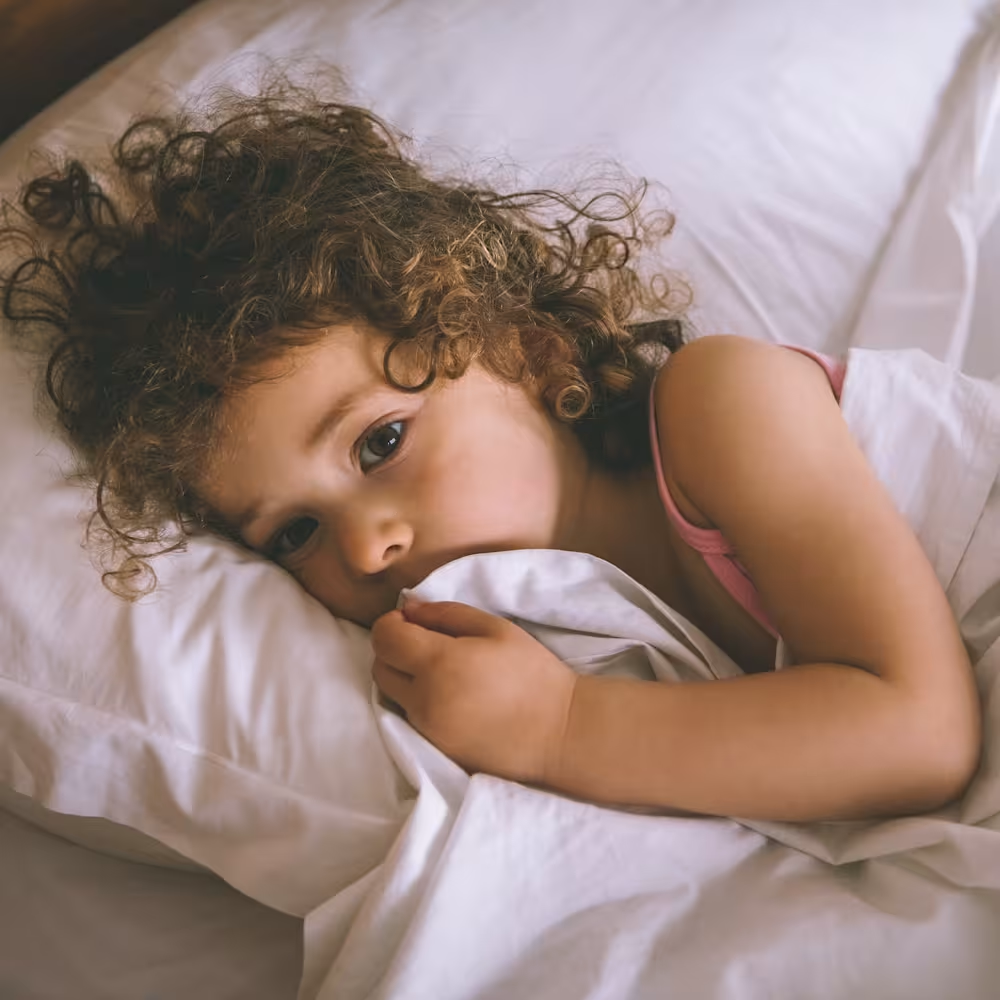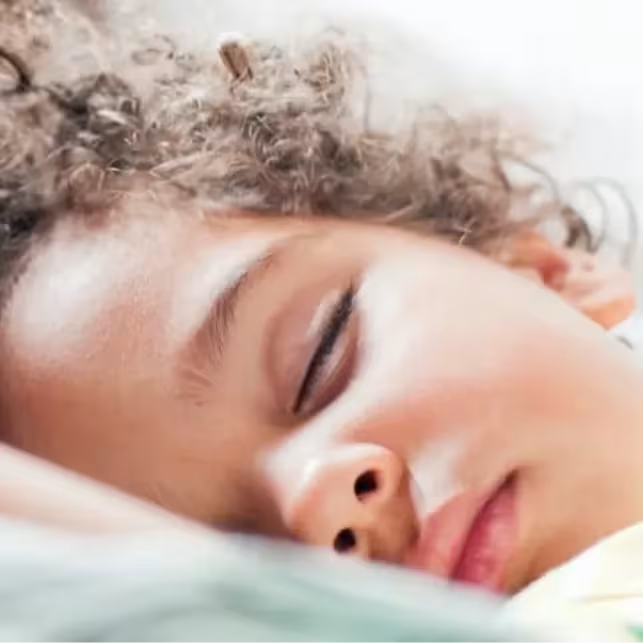Why is my preschooler going to bed so late?
Updated Oct 16, 2025

When it’s bedtime but your preschooler doesn’t want to fall asleep or is having trouble, it can be easy to get frustrated. This is a common problem but not an easy one when you’re a tired parent or caregiver. When preschoolers don’t get enough sleep, they can struggle with fatigue during the day, and they can have trouble regulating their mood and emotions.
In this article, we’ll explore some reasons why preschoolers sometimes go to bed late and how missing out on sleep can affect your child. We’ll also explore potential solutions to help them (and you!) get more sleep.
Common reasons why preschoolers go to bed late
Sleep schedule factors
As your preschooler grows and develops, their sleep needs change. The American Academy of Pediatrics (AAP) recommends that kids ages 3 - 5 sleep for 11 - 13 hours in a 24-hour period []. For some kids in the preschool age group, this might include a nap, while others might have stopped napping.
For kiddos still napping, daytime sleep is often pushed to later afternoon because they can comfortably stay awake longer in the morning. This can lead to a later bedtime since they likely won’t be tired enough to sleep for the night before around 8:00 - 9:00 PM. While this is sometimes less than ideal for parents looking to have downtime before their own bedtime, rest assured bedtime will likely shift earlier again once they stop napping.
Sleep onset factors
Sometimes, preschoolers want help falling asleep, and they don’t want to be alone in their room. This might be due to fears, comfort, or simply preference and habit. They might call out to you if you leave the room, and it might take them a long time to fall asleep alone, especially when you’re trying it for the first time. For many kids, comfort items like a special blanket or stuffed animal can help [].
Developmental factors
Many preschoolers will face big changes between 3 - 4, such as starting school for the first time (or switching schools), welcoming a new sibling, traveling, and mastering new milestones. These changes are exciting, but they can contribute to a decline in sleep patterns, including having trouble falling asleep at night and going to bed late [].
Preschoolers also often seek independence and test boundaries, which helps them build their sense of self []. This independence-seeking is normal, but it can make bedtime difficult. It’s common for kiddos to push back against boundaries like bedtime routines and settling down to sleep.
Light exposure before bed
The research on melatonin in young children tells us that evening light is a major influence on a child’s ability to feel sleepy []. Bright lights or screens in the evening can trick your preschooler’s brain into thinking it’s daytime, suppressing melatonin — the hormone that helps them get drowsy. By contrast, a dimly lit environment acts like a gentle whisper to their internal clock that nighttime is here, allowing melatonin to rise and sleepiness to come.
Night time fears
Some preschoolers have that lead to them not wanting to go to sleep at night. They might be afraid of the dark or being alone or worry about nightmares. This anxiety may prevent them from settling to sleep at night.
Sleep environment factors
Your child’s sleep environment can play a big role in how easily they fall asleep. If they’ve recently moved to a , the new freedom might tempt them to play instead of settling down.
Take a look around their room — are there toys or games that might be too exciting at bedtime? Try storing those out of sight to help them focus on sleep.
Also consider the room’s light and noise levels. White noise can help block out household sounds, and blackout curtains can keep light from disrupting sleep.
If possible, create a calm atmosphere for the whole family before bed. When the house winds down together, your child may find it easier to follow suit.
How going to bed too late can affect mood and behavior
We can all feel off after a late night — cranky, tired, and unfocused. It’s the same for kids.
Preschoolers need enough sleep to stay energized, wake up on time, and manage their emotions. Poor sleep can lead to low energy, trouble focusing, and moodiness. If your child isn’t getting enough rest, you’ll probably notice it in their behavior and overall vibe the next day.
Tips for encouraging your child to go to bed earlier
Tip #1: Adjust the nap
If your preschooler’s bedtime is creeping later, adjusting their nap can help. Most kids need 5 – 6 hours of wake time between nap and bedtime, so a late or long nap might be keeping them up.
Try moving the nap earlier or capping it at 1 – 1.5 hours to build more sleep pressure by bedtime. Shifting the whole schedule earlier (including morning wake time) can also help. Make changes gradually, about 10 – 15 minutes per day, to find a rhythm that works.
If your child is 3 or older and bedtime is still too late (think after 9:00 PM), it may be time to phase out naps. Swap them for a calm quiet time so they still get a midday reset — and you get a break too.
Tip #2: Evaluate how your preschooler is falling asleep
If your preschooler needs you nearby to fall asleep, it might be pushing bedtime later. Kids often take longer to settle when a parent’s in the room.
Try gradually moving farther away each night. You can start next to the bed, then across the room, and eventually just outside the door. This gentle approach can help them learn to fall asleep on their own.
Tip #3: Set a consistent bedtime
Getting your kiddo in bed and ready for sleep at the same time every night can help regulate your preschooler’s body clock and help them fall asleep more easily [].
Tip #4: Implement a longer, calming bedtime routine
Keep lights low and turn off screens during the hour leading up to bedtime. Many preschoolers benefit from a longer bedtime routine (at least 45 minutes) which gives them plenty of time to wind down in a calm, dimly lit environment.
If you already have a routine, try extending it or spending more time in dim lighting. Many kids need additional time just to shift from playtime to sleep mode.
Some new elements to consider adding to your evening routine include:
Listening to calming music
Talking about their day
Listening to an
Need a little help? Try our — it turns bedtime into a screen-free, magical adventure your child will actually look forward to.
Tip #6: Work through bedtime fears
If bedtime fears are keeping your preschooler from falling asleep at night or if they’re struggling with any other emotional factors, try to work through those together. Ask them about their fear and work to understand it. Sometimes, kids say they’re scared of things from . Take a closer look at the shows and movies they’re watching — you might be surprised by what scares them. Something seemingly not scary like a grasshopper from a show may be on their mind!
To help your kiddo work through their fear, try the following techniques:
Validate their emotions
Reassure them that they’re safe
Stick to a consistent routine
Give them comfort items like a special toy or blanket
Offer to check on in them 10 - 15 minutes after lights out
Tip #7: Try positive reinforcement
A popular positive reinforcement technique is a . For example, they can get a sticker each time they go to bed at bedtime. When they fill a row or their whole chart, they get a special prize or treat.
Visual cues via a can also help your preschooler go to bed at bedtime. You can set the clock to change to a specific color when it’s 7:30 PM, for example. This can help eliminate power struggles as the clock is a consistent, concrete way to show your child when it’s time for sleep.
Tip #8: Adjust expectations
Though it can be difficult, it’s helpful for some parents to adjust their expectations when it comes to their child’s bedtime. Sometimes, what parents consider to be late bedtime is age-appropriate. This can be particularly true for children who still nap. An appropriate bedtime might be as late as 9:00 PM. In these cases, in order to move bedtime earlier, their entire schedule should be shifted earlier (versus expecting them to fall asleep earlier with the same schedule).
Tip #9: Build in daily quiet time
If your child doesn’t nap or have regular quiet time during the day, bedtime might be their first chance to slow down, making it harder to fall asleep.
Try adding a short rest period in the afternoon. Even 15 – 20 minutes of quiet play or reading can help them decompress. If they’re resistant, use a special basket of toys or books just for this time. Over time, you can gradually increase the length as they get used to it.
When to seek help
It’s common for kids to have periods where they struggle with bedtime. In many cases, this is normal and nothing to worry about. However, sometimes a late bedtime and trouble falling asleep could signal a larger issue.
When a late bedtime may signal a larger issue
Some potential concerns in a kid who is having trouble sleeping include restless leg syndrome and sleep apnea. With restless leg syndrome, your child might seem fidgety or like they just can’t stay still. Some signs of sleep apnea include pauses in breathing and gasping for air during the night [].
If you suspect either of these issues or if you’re simply concerned that your child’s bedtime struggles are a symptom of a larger problem, talk to their healthcare provider.
Takeaway
Causes of late bedtime in children can vary. Preschoolers can go to bed late due to their daily schedule, developmental milestones, the way they fall asleep, light exposure nighttime fears, or distractions in their sleep environment.
Insufficient sleep often leads to trouble regulating moods and emotions during the day. It can also make your child fatigued. If you notice your child’s mood and energy levels are off, this is a good sign that they may benefit from more sleep and an earlier bedtime. However, some children will have a “late” bedtime (as late as 9:00 PM if they’re still napping) and a schedule adjustment may not be necessary unless you’re looking to move their whole sleep schedule earlier.
If your child is going to bed too late, try things like adjusting or dropping their nap, having a firm bedtime with a predictable bedtime routine, limiting stimulation before bed, working through bedtime fears, and napping or resting during the day.
Preschooler going to bed too late FAQ
Share article:
Note: The content on this site is for informational purposes only and should not replace medical advice from your doctor, pediatrician, or medical professional. If you have questions or concerns, you should contact a medical professional.






